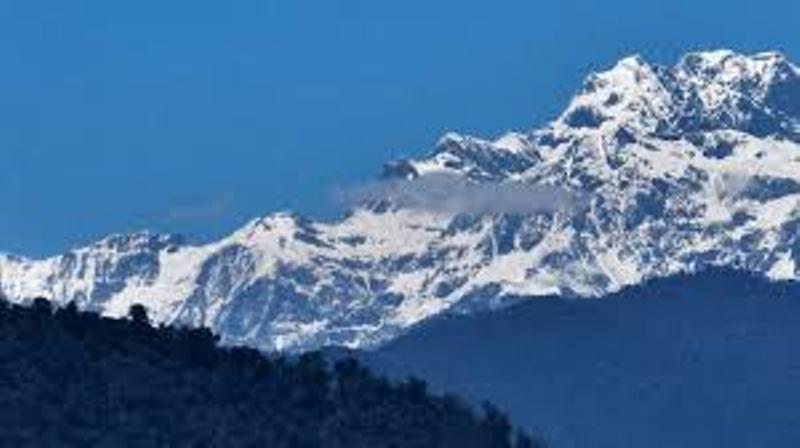Nagaland: Researchers from Nagaland University and Cotton University, Guwahati, have revealed alarming data on the significant retreat of glaciers in Arunachal Pradesh over the past three decades, highlighting the growing impacts of climate change on the region’s fragile ecosystems.
The Himalayas, often referred to as the ‘Third Pole,’ contain the largest concentration of glaciers outside the polar regions.
These glaciers are vital, supplying fresh water to more than 1.3 billion people in downstream areas.
However, recent studies show that rapid glacial retreat is threatening long-term water availability and environmental stability.
The study, led by Dr. Latonglila Jamir of Nagaland University and Dr. Nabajit Hazarika of Cotton University, alongside research scholars Vimha Ritse and Amenuo Susan Kulnu, was published in the renowned, peer-reviewed Journal of Earth System Science.
Dr. Jamir, an Associate Professor in the Department of Environmental Science at Nagaland University, explained that the research used Remote Sensing (RS) and Geographic Information Systems (GIS) to analyse glacier changes in Arunachal Pradesh between 1988 and 2020.
“The glaciers in the region are mainly located between 4,500 and 4,800 meters above sea level,” she said.
The findings revealed a drastic reduction in glacier coverage. In 1988, 756 glaciers covered approximately 585.23 square kilometers.
By 2020, that number had dropped to 646 glaciers, covering just 275.38 square kilometers, showing an average loss of 16.94 square kilometers per year.
The study also highlighted that smaller glaciers, particularly those under 5 square kilometers, are retreating at a faster rate.
Dr. Jamir further explained the broader implications of these findings: “The retreat of glaciers is not just an environmental concern for the region but poses significant challenges for communities reliant on glacial meltwater for agriculture and drinking water. Initially, melting glaciers may cause flooding and unstable river flows, but in the long term, the reduction in glacial mass will result in lower water availability. Additionally, the expansion of glacial lakes creates further risks, as sudden outbursts (GLOFs) could lead to catastrophic floods.”
Although the issue of glacier retreat has been widely studied in other parts of the Himalayas, research on the Eastern Himalayas, including Arunachal Pradesh, remains limited.
ALSO READ: India-Bangladesh ties in deep-freeze
This study adds critical data to understanding the changes happening in this region and their potential impact on water resources.
The researchers stress the importance of continued monitoring of the glaciers and the development of better climate adaptation strategies.
As climate change accelerates, studies like this one are essential for informing water management policies and disaster preparedness strategies for the communities dependent on these glaciers.
The study is a timely reminder of the pressing need for regional and global efforts to address climate change, which is rapidly reshaping the Himalayan ecosystem and threatening the livelihoods of millions who depend on its resources.















